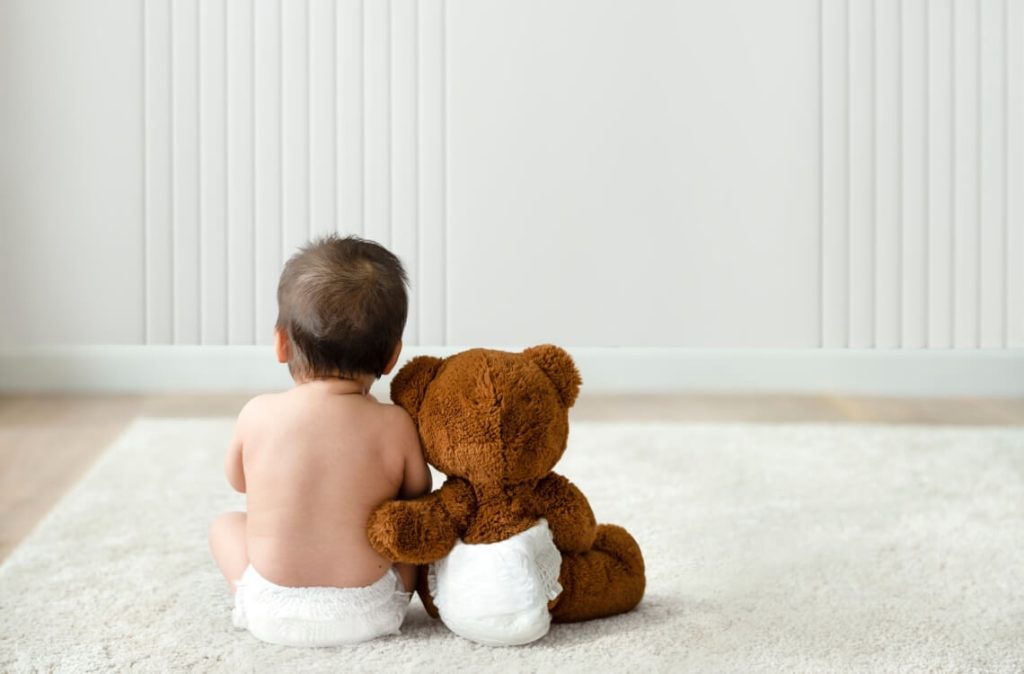The Diaper Dilemma: How Much Do We Really Know?
So, we know that in the whirlwind of parenthood, convenience often takes center stage.
A diaper that’s absorbent and keeps the mess contained? Perfect.
But let’s pause for a moment.
Have you ever wondered about the materials that make up these seemingly magical products?
Are they as safe as they are functional?
For parents, especially those with newborns, these are critical questions to consider.
Some parents may assume that all diapers are created equal.
After all, they’re sold in stores and advertised as safe for babies.
But not all diapers are the same, and the materials used can vary widely between brands.
Some might contain substances that could be potentially harmful to a baby’s sensitive skin.
It’s a reality that’s not often talked about but deserves our attention.
What’s Inside the Diaper?
Diapers are made of multiple layers designed for specific purposes, like absorbing moisture and preventing leaks.
But these layers may include components such as:
- Absorbent gels and polymers: These are what keeps your baby dry but their chemical composition may raise questions.
- Fragrances and lotions: Added to mask odours or soothe skin but could irritate some babies.
- Plastics and synthetic fibres: Often present in the waterproof outer layers, but are they breathable enough for your baby’s comfort?
- Chlorine: Often found in those pearly white diapers which mimics purity and cleanliness.
- Dyes: These are used to create the cute and colourful designs we all hate to love.
While many brands are transparent about their materials, others provide little information.
This lack of clarity makes it even more important for parents to ask questions and seek out answers.
Why Should Parents Care About Diaper Materials?
A newborn’s skin is much thinner than an adult’s, making it more permeable and sensitive.
So, it’s not just about dryness and comfort – it’s about understanding exactly what’s touching their delicate skin, 24/7.
As a parent, I find myself deeply invested in ensuring that everything my kids use is safe and clean – and I know I’m not alone.
I spend time researching the best steam and UV sterilisers, and carefully choose skincare products that I trust.
But shouldn’t we be applying that same level of care to the diapers we use?
After all, diapers aren’t just a convenience – they’re an essential part of daily life, directly affecting your baby’s comfort and wellbeing.
So here’s the question: are the materials in the diapers we choose truly as safe and gentle as we hope, especially considering how intimately they touch our babies’ skin?
How Can Malaysian Parents Make Informed Choices?
Digging Deeper: Why It’s Time to Reconsider What’s Inside Your Baby’s Diaper
Diapers are one of the most used products in your baby’s first years, yet discussions about their safety and materials often take a backseat.
As parents, it’s time we start asking the right questions:
- What do we want in a diaper for our baby?
- What don’t we want?
- And how can we ensure our choices are both informed and safe?
The goal isn’t to alarm parents believing that they have been doing it wrong, but to inspire curiosity.
By raising awareness, we can encourage more conversations around diaper safety and ensure our little ones get the care they deserve, right down to the tiniest details.
So mummies and daddies, what’s in your baby’s diaper?
It’s worth a second look, don’t you think?
Let’s Hear from a Fellow Mummy
When it comes to making informed decisions about disposable diapers, it always helps to hear from someone who’s been there.
Watch this insightful video by Reina Lum, where she raises issues and concerns you didn’t know you could have about disposable diaper which may just give you that “Aha!” moment you’ve been looking for!
Replying to @intanfeyy4272 I just wanna add some legal cases and international parliamentary discussions about this disposable diaper issue. As a fellow mom, I ckp ni sebab I pun guna disposable diapers and just want the best for our babies 🙏🏼 #fypmalaysia #diapers #momsoftiktok #babies
Wondering where to find diapers that prioritise safety and comfort for your little one?
Visit themilkinc.com to learn more about diapers designed with your baby’s delicate skin in mind.
Disclaimer: The information provided in this article is for informational purposes only and should not be considered as medical advice from Motherhood. For any health-related concerns, it is advisable to consult with a qualified healthcare professional or medical practitioner.
For more insightful stories and fun recipes, stay tuned to Motherhood Story!
